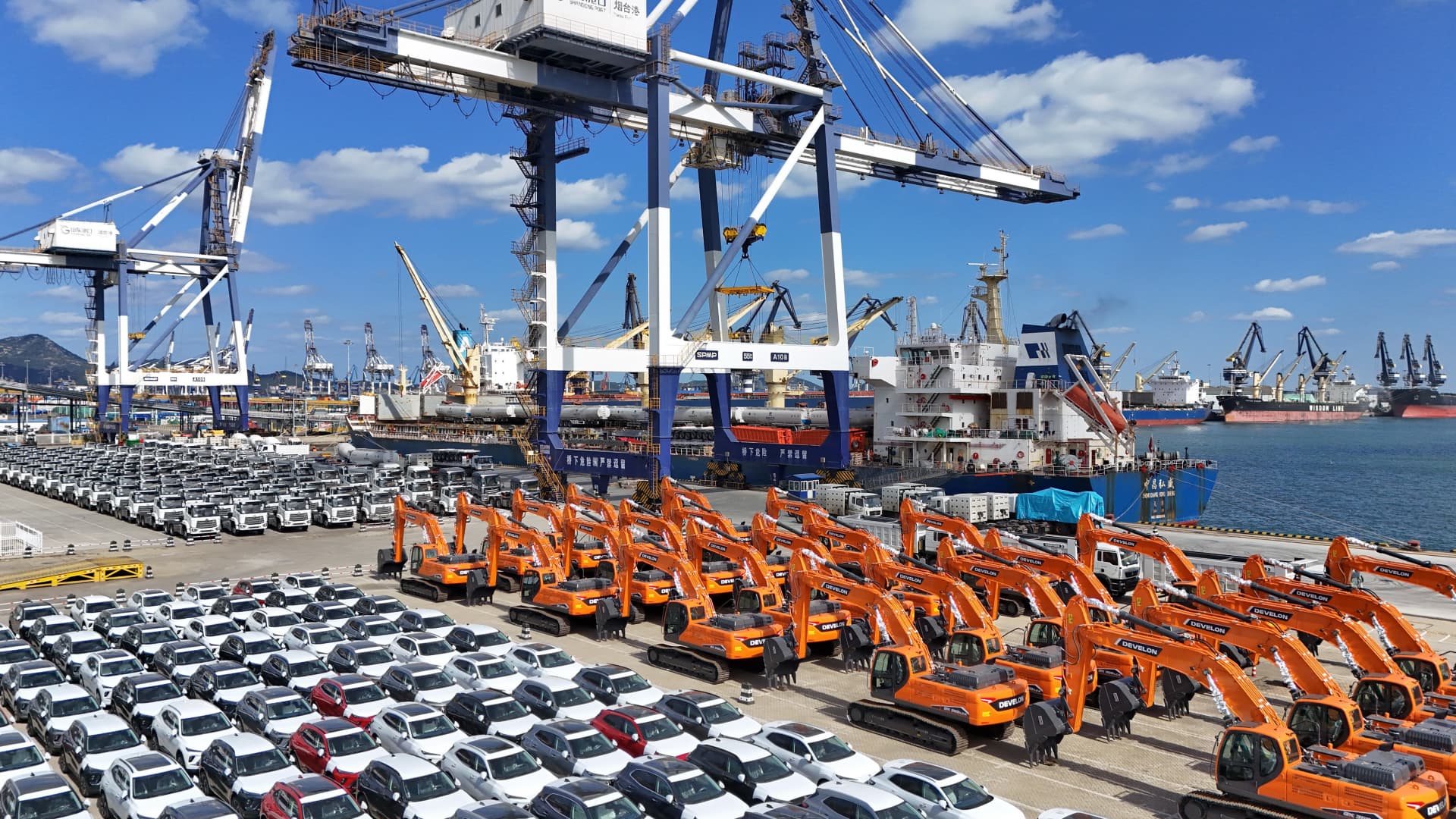
China’s manufacturing activity contracted to a six-month low of 49.0 in October 2025, missing analyst expectations and signaling a significant slowdown. This marks a reversal of recent recovery trends and highlights deepening challenges within the world’s second-largest economy.
This contraction is a key concern for global markets, particularly given reignited trade tensions with the U.S. during the month. Investors will be closely monitoring the impact on global supply chains and demand.
As of market close today (Oct 25, 2025), September’s PMI stood at 49.8. Analyst consensus for October was 49.6.
This report details the slump and its implications.
| Metric | Previous (Sep 2025) | Current (Oct 2025) | Change |
|---|---|---|---|
| Manufacturing PMI | 49.8 | 49.0 | -0.8 |
| Industrial Firms Profit YoY | N/A | +21.6% | +21.6% |
| Q3 GDP Growth YoY | 4.8% | 4.7% (Estimate) | -0.1% |
Expert Market Analysis
China’s manufacturing sector has experienced a notable downturn, with the October Purchasing Managers’ Index (PMI) falling to 49.0, its lowest point in six months. This figure falls short of the 49.6 expected by Reuters poll respondents, signaling a contractionary trend as any reading below 50 indicates a decrease in manufacturing activity. This decline reverses the modest recovery observed in September, when the PMI reached 49.8, and underscores a persistent contraction that has been ongoing since April. This period has been significantly influenced by intensified trade tensions with the U.S., particularly the impact of U.S. President Donald Trump’s tariff campaign, which has exerted pressure on Chinese factories and contributed to a softening of global demand. The broader economic landscape in China also reveals signs of strain, with third-quarter GDP growth slowing to 4.8%, the weakest performance in a year, and fixed-asset investment registering its first contraction since 2020, indicating widespread economic headwinds.
Despite the overall manufacturing slump, a peculiar dichotomy emerges from the data: large industrial firms reported a substantial 21.6% year-on-year surge in profits during October. This profit increase is largely attributed to Beijing’s successful efforts to curb price wars and address overcapacity by easing factory-gate price declines. However, this positive performance in large firms is starkly contrasted by sluggish domestic demand. This weakness is further exacerbated by a prolonged property market downturn and precarious labor conditions, which continue to suppress household spending power. Investors are keen to analyze the interplay between declining manufacturing output and rising industrial profits to ascertain the true health of the Chinese economy. The implications for global commodity demand, especially for materials essential to manufacturing and construction, are significant and warrant close observation.
When comparing China’s manufacturing performance to other major global economies, it becomes evident that the entire global manufacturing sector has been facing considerable headwinds. However, the specific factors contributing to China’s deeper contraction, such as the direct impacts of trade wars and persistent domestic demand issues, differentiate its situation. While some regional competitors might be experiencing moderate growth, China’s economy is navigating a far more complex and challenging landscape. The nation’s substantial reliance on exports makes it exceptionally vulnerable to shifts in global trade policies and fluctuations in international consumer sentiment. While the recent trade de-escalation agreement with the U.S. offers a potential ray of hope, its long-term efficacy remains uncertain, especially considering the intricate geopolitical and economic rivalries at play.
The latest PMI data presents a cautious short-term outlook for China’s manufacturing sector. While the recent U.S.-China trade détente might offer some relief, the underlying domestic economic challenges persist, demanding significant attention. Investors should closely monitor the influence of consumer sentiment and the stability of the property market on future demand dynamics. Potential investment opportunities may emerge in sectors less directly exposed to trade war impacts or those benefiting from targeted domestic stimulus measures. Nevertheless, the inherent risks associated with geopolitical uncertainties and the fragile nature of the current trade truce necessitate a prudent investment approach. Key upcoming events to watch include further data releases on consumer spending and the government’s policy responses to address economic weaknesses.
Related Topics:
China Manufacturing PMI, China Economy 2025, Global Manufacturing Outlook, Trade Tensions Impact, October PMI Data, Economic Contraction China, Chinese Industrial Profits, China PMI October, Manufacturing Sector Analysis, US China Trade War

